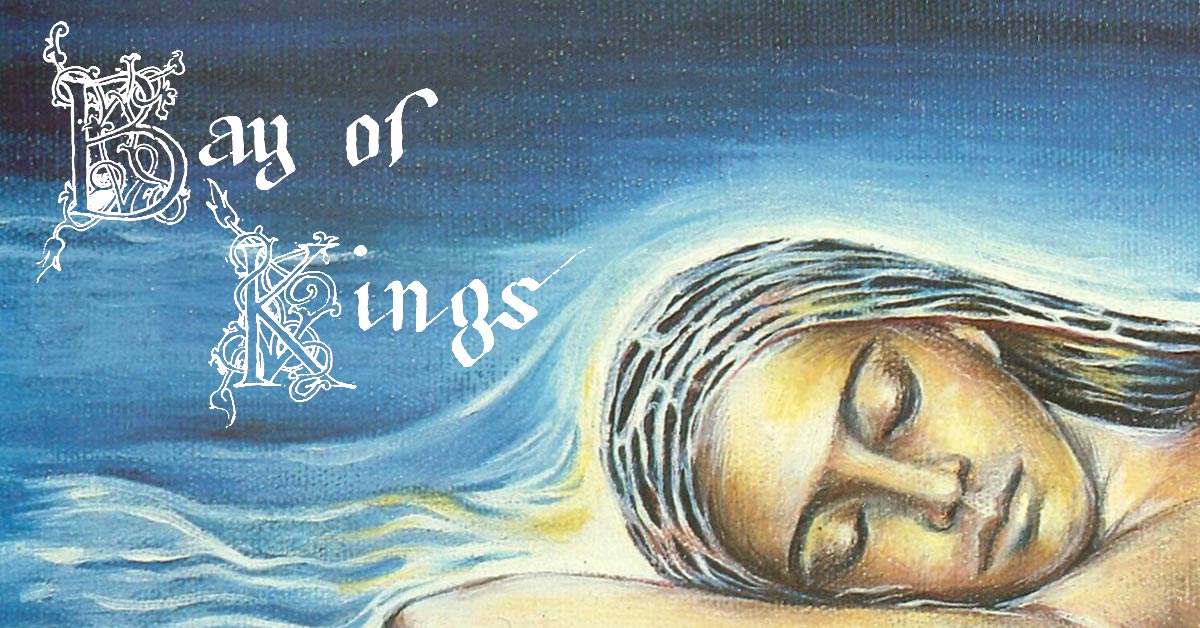- Artikel
- Lesezeit ca. 8 Minuten
Steve Hackett – Bay Of Kings – album review
After a series of rock albums, Steve Hackett released his first acoustic album in 1983. For the 40th anniversary, Thomas Jesse took a closer look at the album.
Preface
Once upon a time there was a young London teenager who played the harmonica but was not really satisfied with his musical life. He discovered a recording of the Spanish guitarist Andrès Segovia playing Bach 1. The boy’s love for the guitar was awakened. He practised, he played – alone, but also with his brother John, who specialised in the flute. Then it was time to venture into the big wide world of rock’n’roll. With a bold and clever advertisement 2 he attracted the interest of a band with the magical name of GENESIS. Thus was born an exciting, adventurous and fruitful time that produced six studio albums and a solo outing. Our hero wanted more, ideas erupted from him like a volcano. When the band failed to appreciate these ideas, he left. He continued with five rock albums before the ghost of Segovia spoke to him louder and more insistently, asking for an acoustic album. Steve, whose great, sometimes stubborn will made him fight bravely for himself, set off for new horizons, left his musical home and began to experiment. It was autumn 1983 when the acoustic album saw the light of day and is now celebrating its 40th anniversary. True or false?
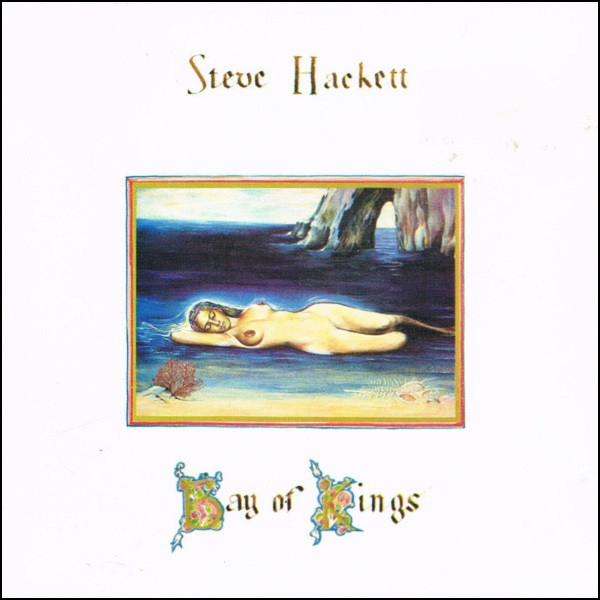
Background
Steve had always included acoustic numbers on his solo albums. 3
With Genesis it was the famous Horizons and finally the nylon guitar intro to Blood On The Rooftops that showed his interest in acoustic music. He had repeatedly pitched the idea of an all-acoustic album to his label, Charisma. Just like his wish to release a live album, this was rejected. Perhaps Charisma was afraid of the financial risk, as unplugged recordings were still a rarity in the early 80s. So after his album Highly Strung, which was released by Charisma in April 1983, Steve moved to Lamborghini Records to concentrate on Bay Of Kings. Ideas (and even recordings) for the tracks dated back to 1980. It was to be a collection of new and rearranged old tracks (including Horizons and Kim). He was accompanied by his brother John on flute and Nick Magnus on keyboards. Shortly after its release, the album peaked at number 70 in the UK charts, only to fade quickly into obscurity. It did, however, sell well in the classical music departments. 4
Artwork
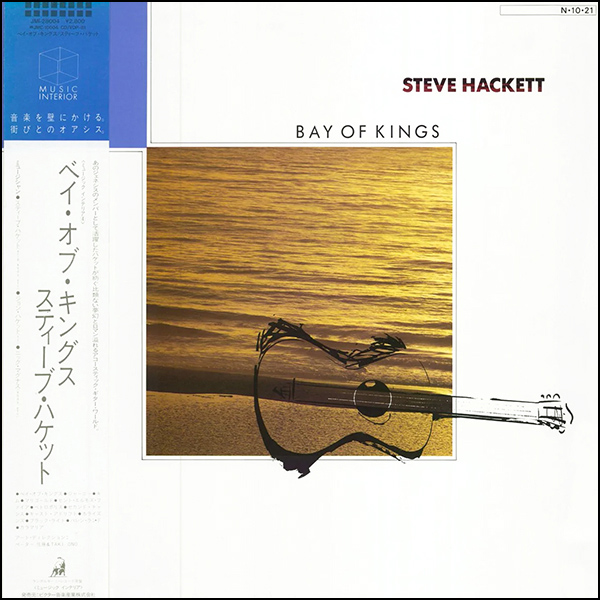
The cover was again designed by Steve Hakett’s wife at the time, Kim Poor. She painted a picture of a female nude. Dreaming, lascivious, the woman lies in the water on a beach. She could be the symbol for the themes of the pieces, which revolve around the element of water, with wind, weather and waves, as well as landscape impressions. The title, the name of the artist and the pieces etc. are reproduced in calligraphy. The back cover features a photograph of Steve sitting in his living room playing an acoustic guitar. He is bathed in warm evening light. On the wall in the background is Kim Poor’s artwork for Voyage Of The Acolyte. The artwork underlines the classic-romantic flair of the album.
Now there are two versions of the cover. The Japanese edition features a photo of waves in the evening light against a white background, with a sketch of a guitar in the foreground, projecting into the image of the waves. Truly unspectacular and devoid of artistic ambition. Obviously they didn’t want to subject the Japanese to a cover with a naked woman.
The third and current version for the new edition (released in 1994) of the album is adorned with a picture of a Steve playing acoustic guitar in the style of diaphanism, created by Kim Poor. 5
Only in the first variant does the calligraphy delight the viewer’s gaze.
The tracks
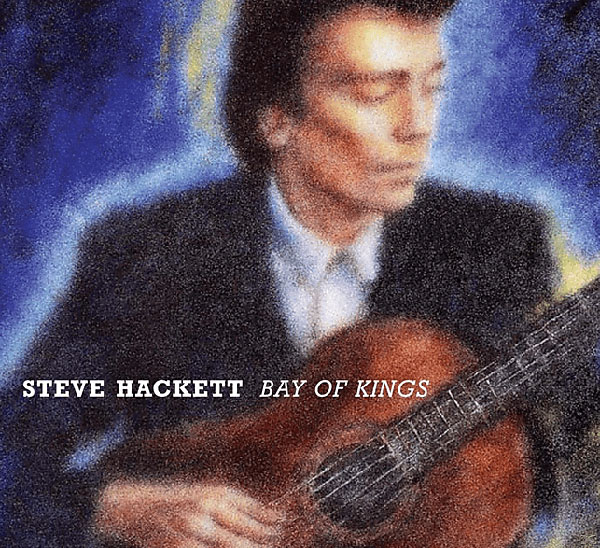
The reviewer sticks to the new edition, which has three bonus tracks. 6
Bay Of Kings (4:52)
The album opens with the title track. The title is the English translation of the Brazilian Angra dos Reis. It is a place on the south coast of the state of Rio de Janeiro. It is located in a bay that contains 365 islands. 7
Steve had in mind the musical paraphrase of a boat bobbing up and down in the gentle waves. So he plays his nylon-string guitar majestically, softly evolving in a slow waltz. From minute 4:25, cheeky little waves of arpeggios push their way into the foreground. Finally they unite with the swaying melodies in a dreamlike finale.
The Journey (4:11)
Strings on a synthesiser intonate the journey. The acoustic guitar begins hesitantly, restrained, but also reflecting the string sounds. Arpeggios from minute 2:01 take us to Spain, the home of flamenco. The journey continues. It is intensified and concluded by a duet of keyboard strings and guitar. Can’t you hear Joaquin Rodrigo’s guitar concerto there? 8
Kim (2:23)
This beautiful piece, a duet between flute and guitar, first appeared on Please Don’t Touch in 1978. John Hackett plays the melody on the flute, Steve’s Guitar adds the chords and the whole thing is framed by Nick Magnus’ keyboards. It sounds warmer, more intimate, sweeter than the original.
Marigold (3:33)
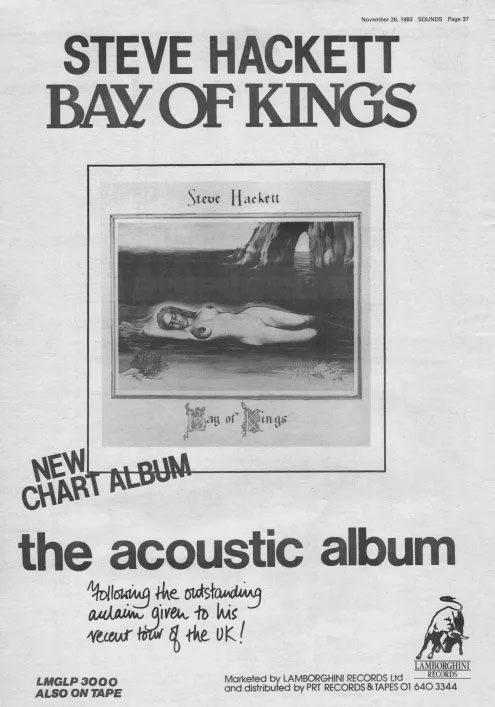
Marigold snaps the listener out of his or her sweet, gentle dreams. Steve’s guitar sounds loud, almost clattering. This is because the guitar is strung with steel strings. Steve uses a harmonizer to represent the strong colours of a marigold. 9
This imitates the sound of a 12-string. The notes sound powerful, bright and luminous.
St. Elmo’s Fire (3:06)
The sea is restless. The wind is howling. The waves crash against the shore of the lighthouse. The guitar conjures up eerie, almost dissonant sounds in the room. Steve tunes the E strings down to D to create the eerie sound. It’s dramatic, moving, emotional – just wonderful! 10
Petropolis (2:44)
The song, which originally opened the second side of the LP, was written by Steve during a downpour in the city of Petropolis, north of Rio de Janeiro. You can hear the rain in the guitar playing. After a good minute, Steve quotes the Renaissance style. The listener feels transported to the Elizabethan age in England. A beautiful beam over the Atlantic. An impressive solo number.
Second Chance (1:56)
The original was released as the B-side of the 1981 single Picture Postcard. A beautiful duet between Steve and John. The music, composed for the TV series of the same name, invites you to dream, to drift away. 11
Cast Adrift (2:11)
The music introduces us to the beauty of the maritime world. We dream of gliding through the waves, around reefs, swimming with a pod of dolphins to deserted beaches. There is fluid movement everywhere. We admire the sun sinking into the sea on the horizon. The melody of the piece penetrates the ear unobtrusively and stays there unforgettably. A dream of music.
Horizons (1:44)
The classic from Foxtrot. Here it seems to be played a bit slower. It sounds softer and warmer than the original. It is up to the listener to decide which version they like better.
Black Light (2:29)
This piece, like a swarm of arpeggios and chords, as Steve describes it, would become a live favourite. Black Light impresses with a sonic cosmos that turns the guitar into a small orchestra. Up and down, fast and slow, happy and sad, Steve makes the sounds resound. But he doesn’t play in a technically boastful way, no, he modestly takes a step back, remains grounded and completely himself. This is magic music!
The Barren Land (3:43)
 Steve found the inspiration for this piece during a trip through the Basque Country to San Sebastian. The desolate, barren landscape is interpreted by Steve’s solo guitar, which creates breathtaking tones and captures the sadness of Spanish music. Occasionally the quiet playing is interrupted by a cheeky, surprising gust of wind. The shy highlight of the album.
Steve found the inspiration for this piece during a trip through the Basque Country to San Sebastian. The desolate, barren landscape is interpreted by Steve’s solo guitar, which creates breathtaking tones and captures the sadness of Spanish music. Occasionally the quiet playing is interrupted by a cheeky, surprising gust of wind. The shy highlight of the album.
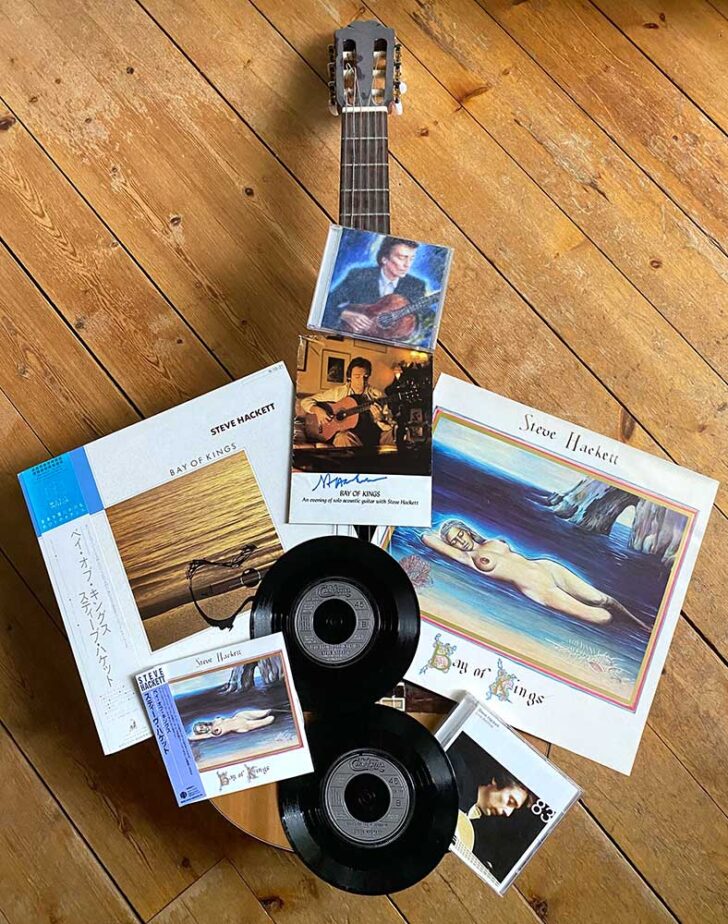
Calmaria (3:22)
The title refers to the calm after the storm. Steve’s pastoral playing expresses a majestic calm. It invites us to look back, to remember past experiences. This mood is reinforced by a wonderful keyboard carpet. The music and the album end in deep melancholy.
Bonus
Time Lapse At Milton Keynes (3:56)
Steve wrote this piece at the time of the Genesis reunion concert in Milton Keynes. He solos so loosely and easily on his guitar that it swings and invites you to dance.
Tales Of The Riverbank (2:02)
Steve interprets the Andante by Mauro Giuliani. 12
The title comes from a 1960s BBC children’s television programme. 13
The track was released in 1981 as the B-side of the single Hope I Don’t Wake.
Skye Boat Song (1:35)
Steve is playing an old Scottish tune dedicated to Bonny Prince Charlie. Skye is the name of the largest of the Skellig Islands off the coast of Kerry in Ireland. Steve played this bittersweet little lament on the harmonica as a child. Steve floats soulfully over the strings of his guitar.
Conclusion
Steve’s collection of acoustic guitar music is not just an album for romantic evenings with a glass of wine or whisky. The album demands intensive listening. If you open yourself to it, you will be drawn into impressionistic landscapes, especially of a maritime nature. The magic of traditional English Renaissance music is mixed with Spanish flamenco and Brazilian flair. Steve, always interested in foreign cultures and nature, translates his travel experiences in an ingenious way. The hint of sweetness is stopped by a reverb that was used when recording the guitar. This gives it a sacred, majestic sound.
After Anthony Phillips, he was the second Genesis musician to have the courage (unlike Ant, Steve was an untrained classical guitarist) to leave the beaten track of rock music and do it successfully! An acoustic tour of the UK followed, with brother John on flute, playing small venues (mainly universities). The concert of 04.11.1983 in Edinburgh was recorded, but would be released much later in 2006 as Live Archive 83. 14
Yehudi Menuhin borrowed music from the album for a soundtrack. 15
A second acoustic album, Momentum, was released in 1988. Steve often returned to acoustic (or unplugged) concerts. He even played with orchestras. His unpretentious way of eliciting wonderful soundscapes from the guitar is unique. Bay of Kings is now forty years old, but still youthfully refreshing and beguilingly beautiful. It is a jewel not only of guitar music and belongs in every well-stocked music collection.
Post Script
The teenager became a great magician on the guitar. He had a long way to go, full of musical adventures, before he reached perfection in the fusion of many musical styles. In the city of Wuppertal, 40 years later, from 14 to 16 April 2023, musicians from an orchestra and a rock band came together to celebrate this music, his music, under the direction of our hero. Yes, they were three magical, enchanting evenings. But the small orchestra, his guitar, will sound forever – true or false?
Author: Thomas Jesse
References
1. See here
2. Source
3. On Please Don’t Touch: Kim, Land of Thousand Autumns / Spectral Mornings: Lost Time in Cordoba / Defector: Two Vamps as Guests / Cured: A Cradle of Swans
4. Reference: Alan Hewitt, Sketches of Hackett, Bedfort 2012, p. 96
5. Title of the image: The Small Orchestra. About Kim Poor: Website
6. for instancel this
7. See here
During the final recordings, a frantic Steve crashed into the glass door of the studio and severely injured his hand and nose. However, he went through with the recording and numbed his pain with a bottle of whiskey. See: Steve Hackett, A Genesis In My Bed, Bedfort 2020, p. 136
8. Compare to this
9. See here
10. Not to be confised with (LINK)
11. See here
12. Compare
13. See here
14. See here
15. Menuhin used it for a soundtrack for a Findhorn Foundation documentary. See liner notes to the new edition 1994 page 3.

